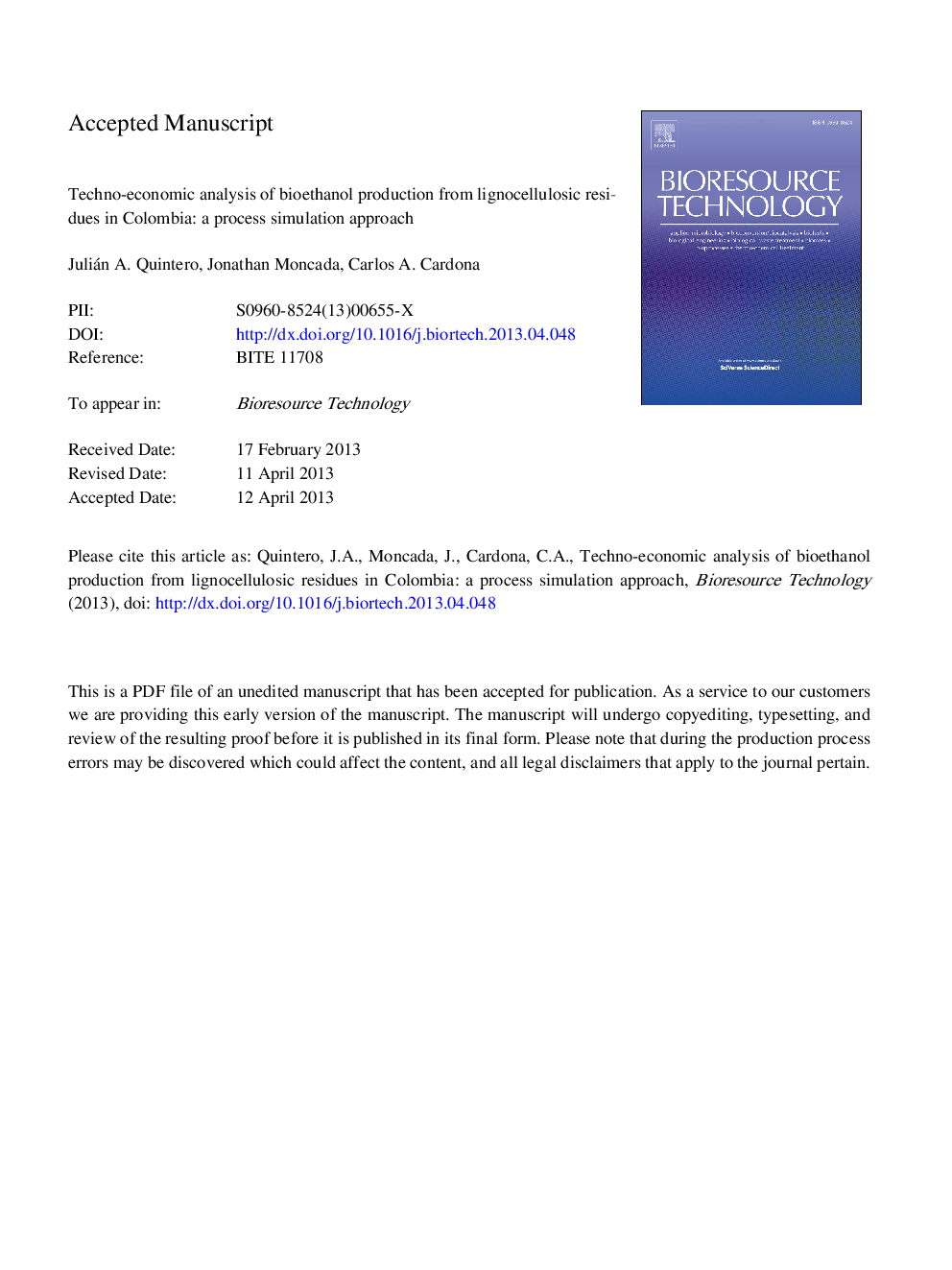| Article ID | Journal | Published Year | Pages | File Type |
|---|---|---|---|---|
| 7082404 | Bioresource Technology | 2013 | 35 Pages |
Abstract
In this study a techno-economic analysis of the production of bioethanol from four lignocellusic (Sugarcane bagasse, Coffee cut-stems, Rice Husk, and Empty Fruit Bunches) residues is presented for the Colombian case. The ethanol production was evaluated using Aspen Plus and Aspen Process Economic Analyzer carrying out the simulation and the economic evaluation, respectively. Simulations included the composition of lignocellulosic residues, which was determined experimentally. It was found that empty fruit bunches presents the highest ethanol yield from a dry basis point of view (313.83Â L/t), while rice husk produced less ethanol (250.56Â L/t). The ethanol production cost was assessed for the standalone ethanol plant and the ethanol plant coupled with a cogeneration system. Moreover, ethanol production cost using EFB was the lowest with (0.49Â US$/L) and without (0.58Â US$/L) cogeneration scheme.
Related Topics
Physical Sciences and Engineering
Chemical Engineering
Process Chemistry and Technology
Authors
Julián A. Quintero, Jonathan Moncada, Carlos A. Cardona,
